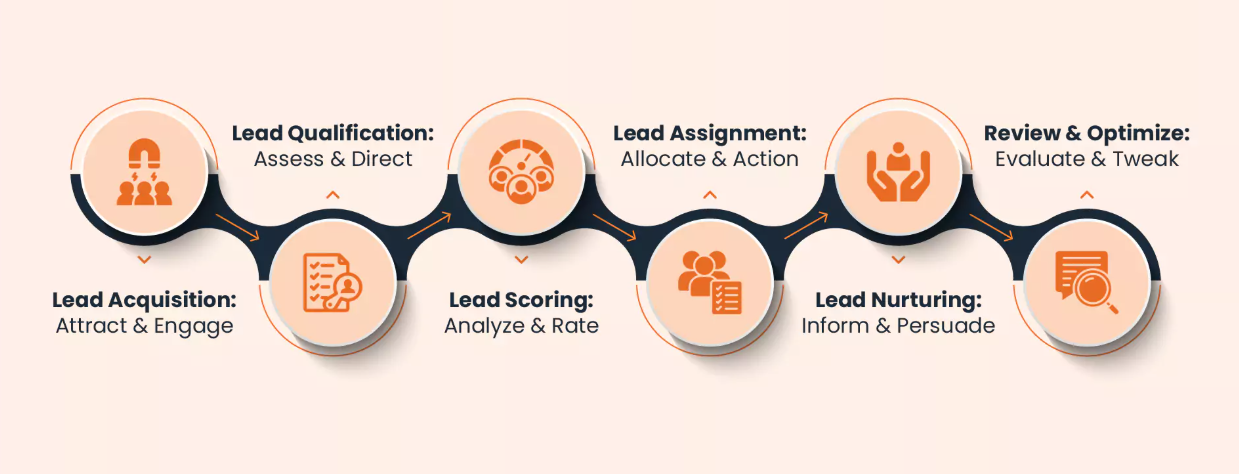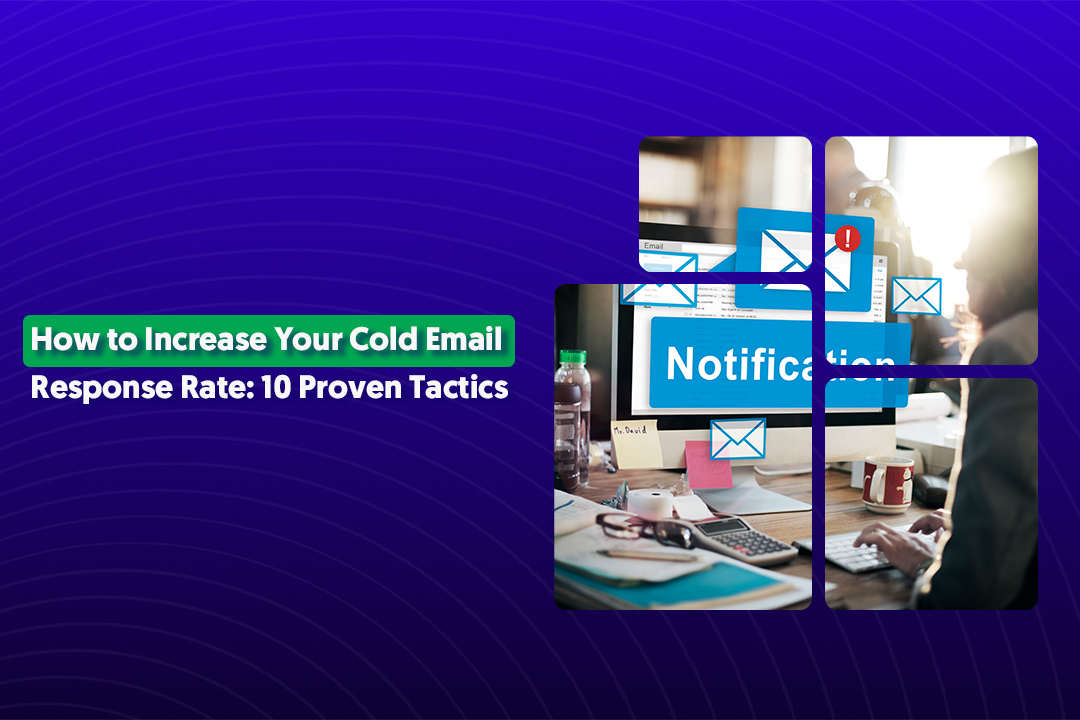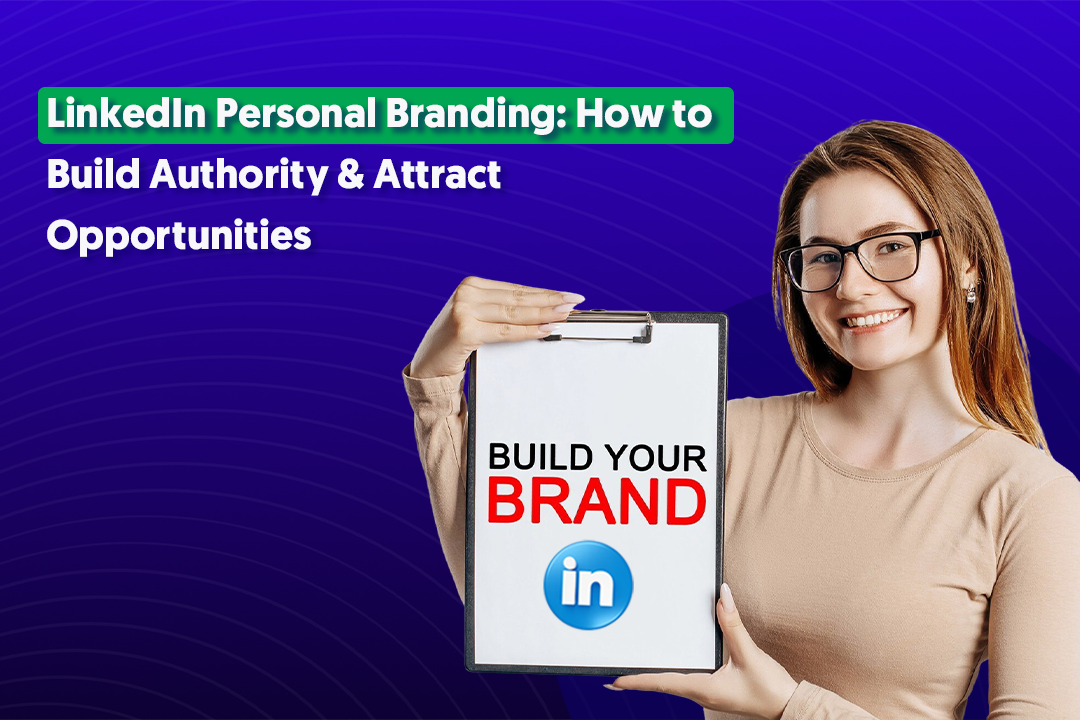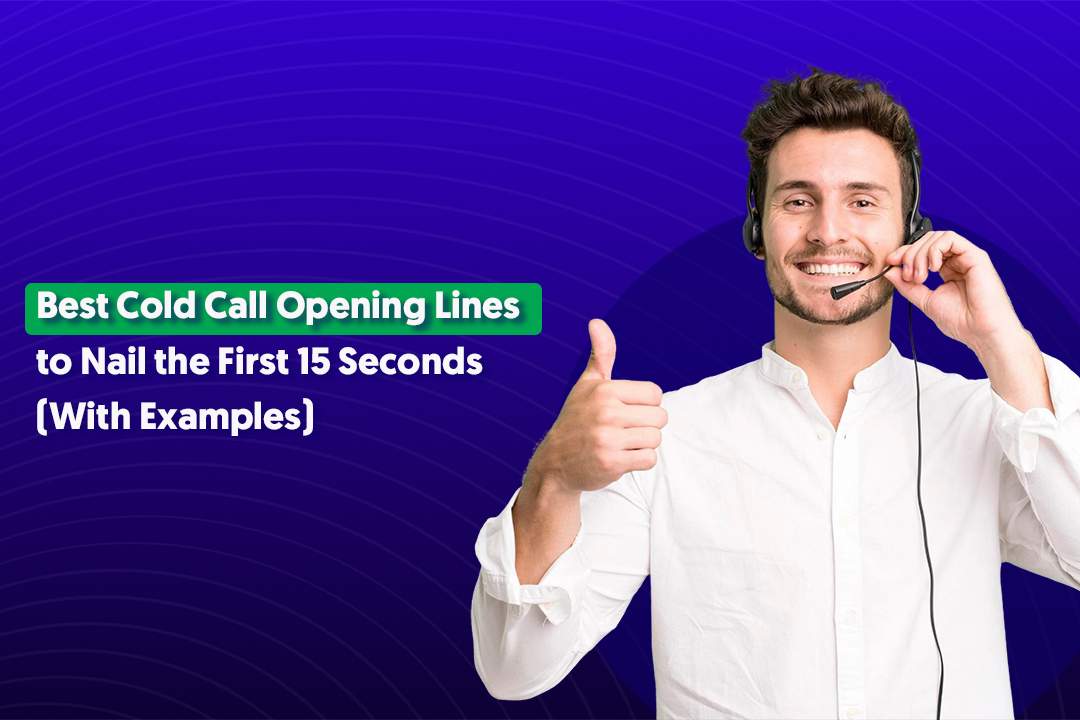Table of Content
Key Takeaways
- Leads show interest; prospects are qualified and ready to buy. Know the difference to focus your sales efforts where they matter.
- Use the BANT framework (Budget, Authority, Need, Timing) to separate real prospects from tire-kickers.
- Lead generation is marketing-driven; prospecting is sales-driven. Align both teams for smooth handoffs.
- Multi-channel outreach gets 3-4x higher response rates than single-channel approaches.
- Track engagement signals like pricing page visits and repeat website traffic to identify when leads are ready to become prospects.
- Not all leads deserve equal attention. Implement lead scoring to prioritize high-intent contacts first.
- Build a nurture process for leads who aren't ready yet, so you stay top-of-mind when they're finally ready to buy.
Every marketer talks about leads. Every salesperson talks about prospects. But are they really the same thing?
If you've ever sat in a meeting where marketing proudly announces "we generated 500 leads!" while sales groans about "only finding 12 real prospects," you know there's a disconnect happening.
Here's the thing: prospect vs lead isn't just semantics. It's the difference between a name in your CRM and someone actually ready to buy from you.
Mix these up, and you'll waste time chasing people who were never going to convert—or worse, let hot opportunities slip through the cracks.
We see this confusion play out every day with our clients. Marketing teams celebrate vanity metrics while sales teams struggle with unqualified contacts.
The result? Friction between departments, wasted budgets, and missed revenue.
In this guide, we're breaking down the real difference between lead and prospect, why it matters for your B2B pipeline, and how to stop confusing the two.
No fluff, just the clarity you need to actually close deals.

What Is a Lead?
A lead is anyone who's shown some interest in what you're selling, but we don't know much about them yet. They raised their hand, but we haven't figured out if they're actually a good fit.
Think of leads as the starting point.
Someone filled out a form, clicked on an ad, or engaged with your content—but that's about all we know.
They're sitting at the top of your funnel, and honestly, most of them won't turn into customers.
Where Leads Come From
Leads typically show up through:
- Newsletter sign-ups or blog subscriptions
- Ebook downloads or content offers
- Webinar registrations
- LinkedIn InMail inquiries or connection requests
- Paid ad form submissions
- Free trial sign-ups
These are all awareness-stage actions. Someone's curious, but they haven't committed to anything yet.
Types of Leads
When we talk about lead vs prospect, it helps to understand that not all leads are created equal:
- MQL (Marketing Qualified Lead): Someone who matches your target criteria and has engaged enough that marketing thinks they're worth passing along. Maybe they downloaded three resources or attended a webinar.
- SQL (Sales Qualified Lead): A lead that sales has vetted and confirmed has actual buying intent and budget. They're warmer, but still need nurturing before they become a prospect.
Example
A SaaS founder downloads your pricing guide at 2am. They're interested, sure. But are they ready to talk? Do they have budget? Are they the decision-maker? We don't know yet.
That's a lead—not a prospect. They need qualification before your sales team should spend serious time on them.
What Is a Prospect?
A prospect is a lead who's been qualified and checked all the right boxes. They fit your Ideal Customer Profile (ICP), they have a real need for what you sell, and they're actually capable of buying from you.
This is where prospect vs lead gets crystal clear: prospects are people you're actively working to close. They're not just browsing—they're evaluating whether to do business with you.
What Makes a Good Prospect?
We use the BANT framework to separate real prospects from tire-kickers:

- Budget: They can actually afford your solution. No point pitching enterprise software to someone with a $500/month budget.
- Authority: They're a decision-maker or have serious influence over the purchase. Talking to an intern won't move deals forward.
- Need: They have a genuine problem you can solve. Not just "nice to have"—they're actively looking for a solution.
- Timing: They're ready to buy in a reasonable timeframe. "Maybe next year" isn't a prospect, it's a long-term lead.
If someone checks these four boxes, they're a prospect worth your team's time. If they don't, keep them in the lead nurture pool.
Example
A VP of Sales at a 50-person B2B company attends your product demo, asks detailed questions about implementation, and requests a custom pricing proposal.
That's a prospect. They've moved beyond interest into active buying mode.

Lead vs Prospect: What’s the Difference?
The difference between a lead and a prospect lies in qualification, intent, and readiness to buy - here’s a clear comparison.
Pro Tip: You can’t skip leads to reach prospects — effective qualification turns one into the other.
The Lead-to-Prospect Journey in the B2B Sales Funnel
Understanding how someone moves from lead to prospect is what separates amateur lead prospecting from a system that actually fills your pipeline.
Here's how the journey works in practice.
1. Lead Generation: Capturing Initial Interest
This is where it all starts. You're casting a wide net to get people into your database.
Lead generation happens through multiple channels: content downloads and gated resources, paid ads on LinkedIn or Google, webinars and virtual events, cold outreach via email or LinkedIn, and referrals from existing customers.
At this stage, we're just trying to get attention. Volume matters, but quality matters more—which is why your targeting needs to be tight from day one.
2. Lead Qualification: Separating Signal from Noise
Now we've got leads. Time to figure out who's actually worth talking to.
Lead prospecting means scoring leads based on: ICP fit (company size, industry, role, location), engagement level (email opens, content downloads, website visits), and buying signals (pricing page views, demo requests, competitor research).
This is where most companies drop the ball. They pass every lead to sales, who then wastes time on people who were never going to buy. Good qualification saves your team weeks of wasted effort.
Check This Out: Best AI Lead Qualification Tools for Faster B2B Conversions

3. Lead Nurturing: Building Trust Before the Ask
Not every lead is ready to buy today. That's fine—we'll stay on their radar until they are.
Lead nurturing keeps you top-of-mind through educational email sequences, valuable LinkedIn content and engagement, case studies and social proof, and personalized follow-ups based on behavior.
The goal isn't to pitch. It's to be the obvious choice when they're finally ready to solve their problem.
4. Sales Handoff: From Lead to Prospect
This is the magic moment. A lead has been qualified, engaged, and is now showing clear buying intent.
The handoff to your SDR or AE should include context on what the lead has downloaded or viewed, their engagement history, any conversations they've had with marketing, and specific pain points they've mentioned.
Once sales team accept them, they're officially a prospect. Now the real work begins.
5. Prospect Engagement: Moving Toward Close
With prospects, we're in active deal mode. Your sales team is running discovery calls to understand their challenges, product demos tailored to their use case, solution mapping that shows ROI, and price negotiations to get the contract signed.
This is where cold email b2b lead prospecting pays off. When you've done the earlier stages right, prospects move through this phase faster because they're already educated and bought into the value you provide.

Prospecting vs Lead Generation — What's the Difference?
Here's where things get confusing. People use these terms interchangeably, but prospecting vs lead generation is actually about two different stages—and two different teams.
Lead Generation = Creating Interest
Lead generation is all about filling the top of your funnel. You're running campaigns and creating content to get people to raise their hands.
This is marketing's territory. They're running LinkedIn ads for ebook downloads, creating SEO content that drives organic traffic, hosting webinars that require registration, and building email lists through gated resources.
The goal? Get contact information and initial interest. Cast the net wide, but make sure you're fishing in the right pond.
Prospecting = Qualifying and Engaging
Prospecting is what happens after someone becomes a lead. Now we're actively reaching out to see if they're worth pursuing.
This is where sales takes over. Lead prospecting means your SDRs are calling leads who downloaded your content, sending personalized LinkedIn messages to engaged contacts, running discovery conversations to assess fit, and moving qualified leads into active deal conversations.
The goal? Separate the window shoppers from the serious buyers.
Marketing-Driven vs Sales-Driven
Think of it this way:
- Lead Generation (Marketing): Running LinkedIn ads that generate 200 form submissions for your ROI calculator.
- Prospecting (Sales): Your SDR reaches out to those 200 people, qualifies 40 who fit your ICP, and books 12 discovery calls with decision-makers who have budget.
One creates volume. The other creates pipeline.

Why Alignment Matters
The biggest mistake we see? Marketing and sales operating in silos. Marketing celebrates generating 1,000 leads while sales complains they're all junk.
Or sales ignores marketing's leads and only works their own outbound list.
Best practice: Create a clear handoff process. Marketing qualifies leads to MQL status based on engagement and fit. Sales accepts SQLs and commits to follow-up within 24 hours. Both teams agree on what makes a qualified prospect. Regular sync meetings keep everyone aligned on what's working.
When marketing and sales work together on prospecting vs lead generation, your conversion rates skyrocket. When they don't, you're burning the budget on both ends.
Effective B2B Prospecting Strategies (to Convert Leads into Sales)
Getting leads is one thing. Turning them into actual prospects who close? That's where most b2b lead prospecting efforts fall apart. Here's what actually works.
1. Define Your Ideal Customer Profile (ICP)
Stop wasting time on leads that were never going to buy. Your ICP is your north star for prospecting leads that actually convert.
Map out the companies and people who are the best fit: company size and revenue range, industry and vertical, tech stack they're using, pain points you solve best, and job titles of decision-makers.
When you're laser-focused on your ICP, your conversion rates double because you're only talking to people who can actually say yes.

2. Personalize Outreach
Generic "just checking in" messages get ignored. Personalized outreach based on real data gets responses.
Use what you know from their lead activity: reference the ebook they downloaded, mention the webinar topic they attended, call out their company's recent funding or expansion, and speak directly to challenges in their industry.
B2b lead prospecting works when prospects think "this person actually gets my situation"—not when they feel like name #247 on a blast list.
Read More Here: Cold Email Outreach Best Practices - The Ultimate Guide!
3. Use Multi-Channel Prospecting
Hitting someone on just one channel doesn't cut it anymore. The best prospecting leads strategy uses cross-channel lead generation.
Effective multi-channel approach:
- LinkedIn Outreach: Send a personalized connection request, engage with their content, then message once connected.
- Cold Email Outreach: Send a value-driven sequence (not a pitch-fest) with relevant case studies or insights.
- Cold Calling: Call for high-value prospects after they've engaged with your content or messages
We see 3-4x higher response rates when prospects hear from us across channels versus just one. It builds familiarity and trust.
4. Automate Smartly
You need scale, but you can't sacrifice personalization. Smart automation solves this.
Tools that work for lead prospecting: CRMs like Apollo or HubSpot for tracking and sequencing, data enrichment tools like Clay for firmographic intel, LinkedIn automation for connection requests and follow-ups, and email sequencing platforms for drip campaigns.
The key is automating the repetitive stuff (data entry, follow-up timing, list building) while keeping the actual messages personalized. Nobody wants to talk to a robot.
More to Explore: Best LinkedIn Automation Tools for Lead Generation & Outreach
5. Track Pipeline Metrics
If you're not measuring it, you can't improve it. B2b lead prospecting requires tracking the funnel.
Key metrics to watch:
- Lead-to-prospect conversion rate (should be 15-25% for good targeting).
- Prospect-to-opportunity rate (aim for 30-40%).
- Time in each stage (where are deals getting stuck?).
- Channel performance (which outreach method drives the most conversions?).
When you know your numbers, you know exactly where to focus your efforts. Most teams are flying blind—don't be one of them.
Common Mistakes When Qualifying Leads into Prospects
We've worked with thousands of B2B companies, and the same prospecting leads mistakes keep killing their conversion rates. Here's what to avoid.
❌ Treating All Leads as Equal
Not every lead deserves the same attention. When you treat a CEO who requested a demo the same as someone who downloaded a blog post, you're wasting time on low-intent contacts while high-value prospects slip away.
The fix: Implement lead scoring based on fit (company size, industry, role) and engagement (content consumed, pages visited, email responses).
Your SDRs should work the hottest leads first, not whoever's next alphabetically in the CRM.
❌ Pushing Demos Too Early
Nothing kills a deal faster than jumping straight to "let me show you a demo" when someone's barely aware of their problem.
A lead who just discovered your website isn't ready for a 45-minute product walkthrough. They need education first.
Save demos for prospects who understand their problem, are actively evaluating solutions, and have shown clear buying intent.
Better approach: Start with a discovery conversation. Understand their challenges. Then, if they're qualified, offer a demo tailored to their specific situation.
❌ Ignoring Engagement Signals
Your leads are telling you when they're ready to become prospects—you're just not listening.
Prospecting leads becomes way easier when you track what matters: pricing page visits, case study downloads, repeat website visits within 24 hours, email link clicks (especially on ROI calculators or comparison guides), and LinkedIn profile views or engagement with your posts.
These signals scream "I'm interested"—but most teams ignore them and stick to their rigid outreach schedule instead.
❌ Lack of CRM Alignment
Here's a classic scenario: Marketing generates 100 qualified leads. They sit in the CRM for three weeks because sales didn't get notified, or the handoff process is unclear, or nobody owns follow-up.
By the time someone reaches out, the lead's gone cold or bought from a competitor who actually responded.
The fix: Create crystal-clear handoff rules. When a lead hits SQL status, sales gets an automatic notification. Set SLAs—like "all SQLs get contacted within 24 hours."
And have weekly alignment meetings where marketing and sales review what's working and what's stuck.
❌ No Nurturing Process
Most leads aren't ready to buy today. But without a nurturing process, they disappear into the void.
You generated interest, then... nothing. No follow-up emails, no valuable content, no reason for them to remember you exist. When they're finally ready to buy six months later, they go with whoever stayed top-of-mind.
Build a nurture track: Email sequences with educational content, LinkedIn engagement on their posts, case studies and customer stories, periodic check-ins with value (not pitches).
Keep prospecting leads warm until they're ready to have a real conversation. The fortune is in the follow-up—but only if you actually follow up.
How Cleverly Helps B2B Companies Turn Leads into Sales Prospects
Here's the problem: you need a steady stream of qualified prospects, but building an in-house team costs a fortune and takes months to get right. That's where we come in.
At Cleverly, we've helped over 10,000 clients generate qualified sales conversations with companies like Amazon, Google, Uber, PayPal, Slack, and Spotify. The results? $312 million in pipeline revenue and $51.2 million in closed revenue.

We're not just another lead generation agency that dumps unqualified contacts into your CRM. We handle the entire b2b lead prospecting process across three channels:
- LinkedIn Lead Generation: Personalized outreach that actually gets responses. We've mastered the art of turning cold connections into warm prospects.
- Cold Email Lead Generation: Multi-touch sequences that educate, engage, and book meetings with decision-makers who fit your ICP.
- Cold Calling (Our $5M System): We place a trained, no-accent appointment setter on your team, write breakthrough scripts, provide the data and tech stack, and guarantee 10-30 qualified sales calls every month. Over 1 million cold calls made, 53,000+ appointments set—at half the cost of building in-house.
The Cleverly difference?
We don't just generate leads. We do the hard work of prospecting leads, qualifying them, and handing you sales-ready prospects who actually show up to calls.
If your pipeline needs fuel and your team needs time back - Book a FREE strategy call and we'll show you exactly how we'd fill your calendar with qualified prospects.

Conclusion
The prospect vs lead confusion isn't just a terminology problem—it's costing you real deals and wasted effort.
Here's the bottom line: leads are interested, prospects are qualified and ready to buy. When you treat them the same, your sales team spins their wheels on tire-kickers while real opportunities go cold.
The companies winning at B2B sales right now? They've built clear processes to move leads through qualification, nurture the ones who aren't ready yet, and focus their selling time exclusively on real prospects who check the BANT boxes.
Stop chasing every lead that comes through the door. Start prospecting leads strategically, align your marketing and sales teams on what "qualified" actually means, and watch your conversion rates climb.
Your pipeline doesn't need more leads. It needs more prospects. Now you know the difference between lead and prospect—and exactly how to turn one into the other.
Frequently Asked Questions





